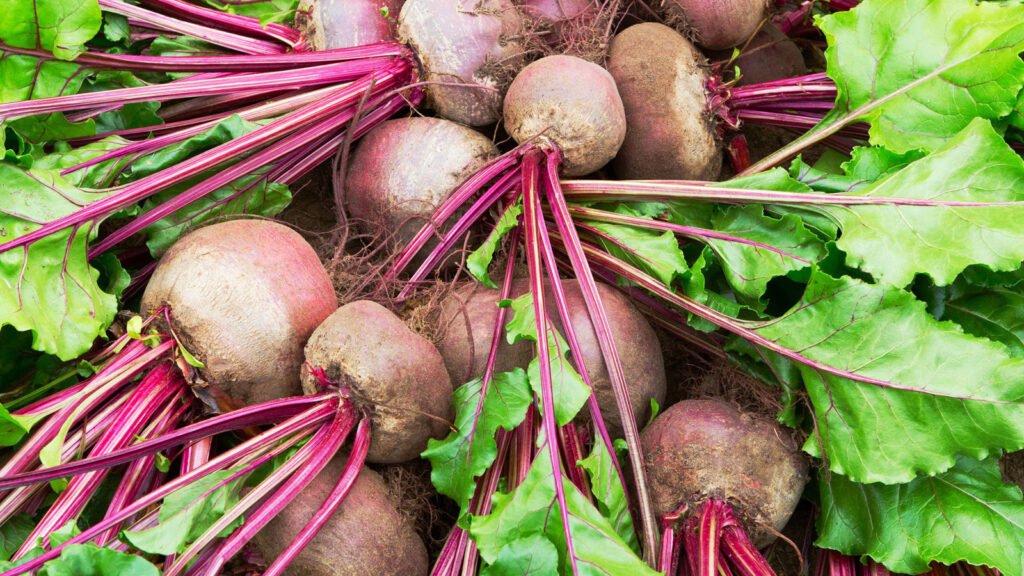
Growing Beetroot in Europe | Tips for Climate, Soil, and Seasonal Gardeners’ Corner
Beetroot is a highly nutritious root vegetable that has gained popularity across Europe for its earthy flavor, health benefits, and versatility in cooking. Beetroot finds a place in many European kitchens, from soups and salads to juices.
However, successfully growing beetroot requires attention to specific environmental factors, including climate, soil, and time of year. In this comprehensive guide, we will delve into the critical elements of growing beetroot in Europe, providing valuable insights to help gardeners cultivate a thriving beetroot crop.
1. Understanding the Ideal Climate for Growing Beetroot in Europe
Beetroot thrives in cool, temperate climates, making it an excellent crop for most parts of Europe. However, the specific growing conditions in different regions can vary widely. Understanding the ideal climate for growing beetroot in Europe is essential for ensuring a healthy harvest.
1. Best Climate for Growing Beetroot
Beetroot prefers cool weather, making spring and autumn the ideal seasons for planting. The plant is relatively hardy and can tolerate light frosts, which is why beetroot is well-suited for the cooler climates in Europe, such as the UK, Germany, and the Netherlands. In Southern Europe, where the summers can be too hot, beetroot can be grown in late autumn or early spring to avoid heat stress.
The Mediterranean regions of Europe, like Italy and Spain, require careful timing for planting. Growing beetroot in such areas may be more successful in the cooler months, as high summer temperatures can cause bolting, where the plant produces flowers and seeds prematurely.
2. Regional Climate Variations
The varying climates of Northern and Southern Europe affect how and when beetroot can be grown. In Northern Europe, where the summers are mild and the growing season is shorter, it’s advisable to plant beetroot in early spring. Southern Europe, with its long, warm summers, calls for early spring or late autumn planting.
For example:
- Growing beetroot in the UK benefits from the cool, moist climate, making it a straightforward crop for beginners.
- In Eastern Europe, where winters can be severe and summers relatively short, beetroot should be planted as soon as the soil is workable in spring.
- In Southern Europe, such as Greece or southern Italy, planting in late autumn helps avoid the summer heat.
3. Frost and Temperature Sensitivity
Beetroot seedlings can tolerate light frosts, but extreme cold can stunt growth or damage plants. The optimal temperature range for growing beetroot is between 10°C and 24°C. Prolonged exposure to temperatures above 24°C can reduce the quality of the roots and cause the plants to bolt.
2. Preparing the Right Soil for Beetroot Growth
The right soil conditions are crucial for growing healthy beetroot in Europe. The plant requires well-draining soil that is rich in nutrients to produce smooth, round roots. Poor soil conditions can lead to misshapen roots or poor yields.
1. Best Soil for Beetroot in Europe
Beetroot grows best in loamy or sandy soils that are slightly acidic to neutral (pH 6.0–7.5). Heavy clay soils can hinder root development, but they can be improved by adding organic matter such as compost. In regions with heavy clay, gardeners should focus on improving drainage.
The best soil for growing beetroot should be light and well-aerated to allow for the proper development of the root system. Ensuring the soil is free from stones and compacted areas will also help produce well-formed beetroots.
2. Soil pH and Fertility
Maintaining the right soil pH for growing beetroot is critical. Beetroot prefers a slightly acidic to neutral pH level (around 6.0 to 7.5). If the soil is too acidic, lime can be added to raise the pH. If the soil is too alkaline, sulfur or organic matter like peat can help lower it.
Beetroot is also a heavy feeder, meaning it requires nutrient-rich soil. Adding well-rotted manure or compost before planting will improve soil fertility. Organic fertilizers rich in potassium are particularly beneficial for boosting beetroot growth and flavor.
3. How to Improve Soil Quality for Beetroot
In organic beetroot farming in Europe, many gardeners prefer to use natural soil amendments like compost, seaweed, or green manure. These organic inputs help to improve soil structure, promote root growth, and enhance the overall yield of the crop.
Mulching the soil around the beetroot plants can help retain moisture and suppress weeds. This practice is particularly useful in southern European regions where soil moisture tends to evaporate quickly.
3. Seasonal Tips for Planting Beetroot in Europe
Timing is everything when it comes to growing beetroot. Planting at the right time ensures optimal growth and higher yields. In Europe, the growing season varies from one region to another, so it’s essential to adapt your planting schedule accordingly.
1. Best Time to Plant Beetroot in Different Regions
In Northern Europe, including countries like the UK and Scandinavia, beetroot should be planted in early spring (April to May). The cool temperatures allow the plants to establish themselves before the summer arrives.
In Southern Europe, where the summers can be quite hot, the best time to plant beetroot is in late autumn (October to November) or early spring (February to March). This ensures that the plants grow during the cooler months and are harvested before the heat sets in.
The beetroot planting calendar for Northern Europe typically runs from March to June, with a secondary planting in late summer for an autumn harvest.
2. Companion Planting and Crop Rotation
Companion planting can enhance the growth and health of beetroot. Good companion plants for beetroot include onions, lettuce, and beans. These plants help deter pests and do not compete for the same nutrients.
Additionally, crop rotation is crucial for maintaining soil health. Avoid planting beetroot in the same spot year after year. Instead, follow a three-year crop rotation cycle by planting beetroot after legumes or nitrogen-fixing crops.
3. Watering and Care During the Growing Season
Beetroot requires consistent moisture, particularly during the germination phase. However, overwatering can lead to root rot and other issues. Watering should be adjusted based on the climate of the region—cooler regions like Northern Europe may not need as much watering as warmer Southern Europe.
During the growing season, water beetroot deeply once or twice a week, depending on the weather. Mulching can help retain moisture and reduce the need for frequent watering, especially in Mediterranean climates.
4. How to Protect Beetroot from Pests and Diseases
Like all crops, beetroot is susceptible to pests and diseases, but with the right care, you can minimize these risks and ensure a healthy crop.
1. Common Pests and How to Prevent Them
Common pests that affect beetroot in Europe include aphids, flea beetles, and leaf miners. These pests can damage the leaves and affect the growth of the plant. To protect beetroot from pests, consider using organic pesticides, or introducing natural predators like ladybugs.
2. Preventing Diseases and Managing Soil Health
Diseases such as downy mildew and root rot can impact beetroot plants, especially in poorly drained soils. To prevent these issues, ensure proper soil drainage and avoid overwatering. Practicing good crop rotation also helps reduce disease buildup in the soil.
5. Harvesting and Storing Beetroot
Harvesting beetroot at the right time is essential for achieving the best flavor and texture. Knowing when to harvest is just as important as the growing process.
1. When to Harvest Beetroot in Different European Climates
Beetroot can be harvested anywhere from 50 to 80 days after planting, depending on the variety and growing conditions. In Northern European climates, harvest typically occurs in late summer to early autumn. In Southern Europe, beetroot planted in the cooler months will be ready for harvest before the intense summer heat.
2. Storing Beetroot for Long-Term Use
After harvesting, beetroot can be stored in a cool, dark place for several months. Storing beetroot at a temperature of around 2°C to 5°C can help maintain its freshness for up to three months. For longer-term storage, beetroot can be pickled, canned, or frozen.
Growing beetroot in Europe is a rewarding experience for gardeners of all skill levels. By understanding the unique climate, soil, and seasonal factors across different European regions, gardeners can cultivate healthy, flavorful beetroot crops. Whether you’re planting in the cool climates of Northern Europe or the warmer regions of Southern Europe, this guide provides everything you need to know to ensure a successful harvest.
With the right care, growing beetroot in Europe can yield nutritious and delicious results, enriching both your garden and your kitchen.

FAQs
- When is the best time to plant beetroot in Europe?
The best time to plant beetroot in Europe is in the spring, after the last frost. Depending on your location, this can range from March in southern Europe to late April or May in northern Europe. - How often should I water beetroot?
Beetroot needs consistent moisture to thrive, but the soil should not become waterlogged. Water once a week, or more frequently in hotter weather, to keep the soil moist but not soggy. - What are common pests that affect beetroot, and how can I manage them?
Common pests include aphids, flea beetles, and leaf miners. Managing them involves using organic insecticides or introducing beneficial insects like ladybugs to your garden.








